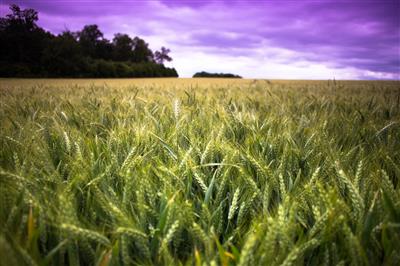By Jonathan Kleinjan, SDSU Extension Crop Production Associate
The spring of 2019 has been cold and wet in many areas, very similar to the weather observed in the spring of 2018. In 2018, despite the challenging weather, spring wheat acres were actually up 8% from the prior year. However, planted acres in 2019 may be reduced as the extended weather forecast shows unfavorable planting conditions extending well into the month. Farmers have begun to consider switching acres away from small grains and into later-planted row crops such as corn or soybeans.
Yield Considerations
One producer asked, ‘When do I start losing yield?’ That can be a difficult question to answer definitively, as weather variations are such a large factor in the final yields of spring wheat.
Hard Red Spring wheat is one of the most tolerant crops to cold temperatures and frost events. Germination and growth will begin when the soil temperature reaches 40°F. It should be planted as early as possible since cooler weather from emergence to the early reproductive stages generally benefits tiller formation and the development of larger heads. Increased growth during the early season typically results in higher yields.
For example, a study in North Dakota showed that spring wheat planted on May 1st had six fewer days of growth from emergence to 6-leaf stage when compared to wheat planted on April 15th. The number of days was further reduced to eleven when planting was delayed until May 15th. Yield data related to this research suggests that wheat loses 1.5% of its yield potential every day after the optimum planting date. However, this can vary greatly from season to season.
Optimum Planting Dates
Optimum planting dates vary according to the location. Typically for most areas that optimum date will range from early to late April, with some producers being able to get in the field earlier or later.
It is recommended to increase seeding rates as planting date is delayed from the optimum date to compensate for the loss in tiller formation. The recommended minimum seeding rate for a normal planting date is 1.2 million pure live seeds per acre, although no-till producers may want to plant more. Seeding rates should be increased by 1% per day for each day planting is delayed. For example, if the optimum planting date is considered to be April 15th, and planting does not occur until May 10th, the seeding rate should be increased by 25% (1.2 million seeds/acre x 1.25 = 1.5 million seeds/acre). SDSU Extension does not recommend planting more than 1.8 million seeds/acre.
Late Planting
If conditions are right, late planted crops can still produce strong yields. In 2018, the SDSU Extension spring wheat variety trial plots were planted on May 14th in South Shore, SD and, despite the late planting date, averaged 69 bu/acre with several varieties yielding above 75 bu/acre.
The wild card in this situation is the weather in June and July. Wheat is highly susceptible to heat during pollination and grain fill. Prolonged exposure to daytime temperatures above 85-90°F and especially nighttime temperatures above 70-72°F during these growth stages can drastically reduce yields, especially if soil moisture levels are low. At present, the National Weather Service is calling for equal chances of above or below normal temperatures in the May-July timeframe. Decisions on weather risk are ultimately up to each individual producer.


